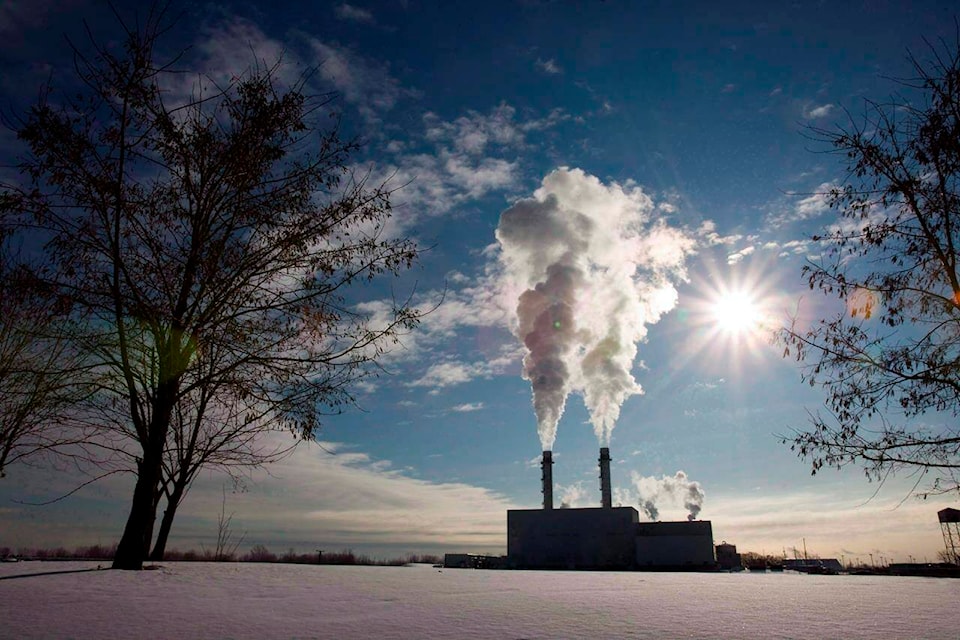Canada’s carbon price could slash greenhouse-gas emissions by more than 100 million tonnes a year by 2030, but only about one-fifth of that will come from the consumer carbon price at the centre of Conservative attacks.
A new analysis published Thursday by the Canadian Climate Institute said the price applied to big industrial emitters plays a far greater role in cutting emissions than the consumer fuel levy.
But the consumer levy is still worth the political battle the Liberals are facing, said Environment Minister Steven Guilbeault.
The analysis, he said, is clear that carbon pricing is the most effective way to cut emissions so Canada can meet its climate targets.
“Without it, I don’t know how we could get there,” Guilbeault said.
“You could make the case that if you don’t do pricing you would have to invest billions of dollars of taxpayers money to get the same result.”
He made the comments as the minority Liberal government faced the remote prospect of a confidence vote Thursday thanks to a Conservative motion over carbon pricing.
As expected, the motion — brought by Conservative Leader Pierre Poilievre — went down to defeat 204-116, with only Tory MPs voting in favour.
The climate institute concluded that together, all existing climate policies should prevent 226 million tonnes of emissions from being released in 2030, or one-third of the total emissions Canada produced in 2021.
Without any of those policies, emissions will be 40 per cent higher in 2030 than with all of them, said institute president Rick Smith.
But the carbon pricing system for big emitters is by far the biggest contributor.
The consumer fuel levy will prevent between 19 million and 22 million tonnes of emissions by 2030. The big industrial price will prevent between 53 million and 90 million tonnes.
“Industrial carbon pricing is the most important contributor to emission reductions,” Smith said.
Smith said because most climate policies interact with each other, it is very hard to attribute one specific total to an individual policy, which is why there is a range in the report.
He also said the reason is simple math: big industry emits far more than households and small businesses do, so cutting its emissions delivers a bigger impact.
That is true even though the price big emitters pay is only applied to a portion of their emissions, while consumers pay it on all fuel purchases.
The report’s findings somewhat counter some of the political rhetoric surrounding carbon pricing, including the disproportionate amount of attention heaped on the consumer carbon policy.
“This debate on the consumer carbon price has sucked way too much oxygen out of the room,” Smith said.
Conservative Leader Pierre Poilievre is adamant that if he wins the next election, consumer carbon pricing is toast. He has been less clear about the big emitters system.
Canada’s national pollution pricing program applies only in jurisdictions that do not have equivalent policies of their own.
Only Quebec, British Columbia and Northwest Territories have their own policies for both consumers and big industry.
Six provinces have introduced their own provincial systems for big emitters, all of them because of the federal requirement.
Manitoba, Prince Edward Island, Yukon and Nunavut use both the federal consumer levy and Ottawa’s big emitters program.
It is not clear if provinces would keep their own systems for major industry in place if the federal government did not demand it.
Most provinces have come out against raising the carbon price on April 1, following Poilievre’s lead.
Guilbeault said Thursday he will keep fighting in favour of carbon pricing, including the consumer levy, because the climate and the planet cannot wait.
“It takes political courage,” he said. “That’s usually the case for difficult things and climate change is a difficult thing.”
He has challenged Poilievre — who has not laid out what alternative plans he has for the climate — to show Canadians a policy that delivers as many emissions cuts as carbon pricing without costing them anything.
Guilbeault said he has worked in environmental policy for 30 years and there is simply no “low hanging fruit” that magically cuts emissions at no cost.
Mia Rabson, The Canadian Press



